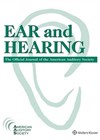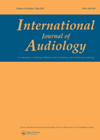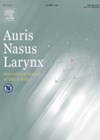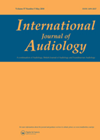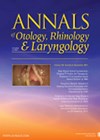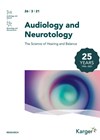
Journal Reviews
How do mermaids hear?
When the imagery of childhood fairy tales meets the more clinically analytical mind of an adult, there may at some point come the question, ‘how do mermaids hear’? Luckily a department of biology in Denmark has sought to furnish such...
Moderating effect of hearing aids on association between hearing loss and brain structure?
Previous studies have suggested links between age-related hearing loss and structural changes in cortical regions with auditory and language functions, which could be causative of cognitive decline linked to the condition. The authors reason reduced sensory input could be causative...
COVID-19 impact on the workplace
The COVID-19 pandemic impacted several areas of people’s life. It is unsurprising that it is now a very common research topic. The described study concerned a discussion about what effects the pandemic had and might have on the audiology workplace,...
Loudness in non-organic hearing loss
Non-organic hearing loss has been of interest to researchers for a long time. In this study the authors compared a loudness rating measured in relation to the sound level for 1000 Hz in normal hearing patients and patients diagnosed with...
Do personal listening devices cause cochlear synaptopathy?
Cochlear synaptopathy is a condition in which noise interrupts the synaptic communication between sensory inner hair cells and low spontaneous rate cochlear nerve fibres. Since these nerve fibres are associated with signal coding in noisy backgrounds, their disruption leads to...
Prognostic value of vascular ultrasonographic findings in patients with idiopathic sudden sensorineural hearing loss
Sudden sensorineural hearing loss is often idiopathic. Although the aetiology of idiopathic sudden sensorineural hearing loss (ISSNHL) is unclear, vascular compromise is one of the frequently proposed hypotheses to explain its pathophysiology. Existing studies have shown an association between ISSNHL...
Algorithms to diagnose NIHL
Finding an efficient diagnostic tool for noise-induced hearing loss (NIHL) has been of research interest for a long time. There are several algorithms that compare expected age-related deterioration of hearing with the actual audiogram. This study aimed to compare a...
Can amplification preserve auditory function?
Hearing loss is a noted modifiable risk factor for dementia, and is also associated with depression, decreased quality of life and isolation. Hearing aids are the main intervention for presbycusis and a 2017 Cochrane Review showed that they have a...
Alcohol and hearing
Alcohol is a well-known central nervous system depressant. Individual reactions to alcohol might vary, but the connection between alcohol consumption and tolerance to loud noise or difficulties in communication in noisy environments are well-observed phenomena; for example, at evening parties....
Audiology and COVID-19
COVID-19 affected all clinical services in a very short time, including audiology. This service improvement investigation concentrated on how audiology services in the UK were impacted by the virus and how perception of tele-audiology changed. About 120 practising audiologists were...
Noise tolerance in the presence of speech
Noise is a common issue reported by people in reference to speech understanding, both for normal and hearing-impaired people. This study investigated how noise loudness, annoyance, distraction and speech interference impact noise tolerance in normal hearing people while listening to...
Cobalt hip implants and auditory-vestibular outcome
Cobalt-chromium (Co-Cr), metal-to-metal hip implants were commonly used until several side-effects were reported due to an increased level of Co and Cr metal ions in patients’ blood. Although this type of hip replacement was almost completely abandoned, there are still...


